State Performance Plan 2005-2012 - Part B - Arkansas Department Of Education Page 108
ADVERTISEMENT
 1
1  2
2  3
3  4
4  5
5  6
6  7
7  8
8  9
9  10
10  11
11  12
12  13
13  14
14  15
15  16
16  17
17  18
18  19
19  20
20  21
21  22
22  23
23  24
24  25
25  26
26  27
27  28
28  29
29  30
30  31
31  32
32  33
33  34
34  35
35  36
36  37
37  38
38  39
39  40
40  41
41  42
42  43
43  44
44  45
45  46
46  47
47  48
48  49
49  50
50  51
51  52
52  53
53  54
54  55
55  56
56  57
57  58
58  59
59  60
60  61
61  62
62  63
63  64
64  65
65  66
66  67
67  68
68  69
69  70
70  71
71  72
72  73
73  74
74  75
75  76
76  77
77  78
78  79
79  80
80  81
81  82
82  83
83  84
84  85
85  86
86  87
87  88
88  89
89  90
90  91
91  92
92  93
93  94
94  95
95  96
96  97
97  98
98  99
99  100
100  101
101  102
102  103
103  104
104  105
105  106
106  107
107  108
108  109
109  110
110  111
111  112
112  113
113  114
114  115
115  116
116  117
117  118
118  119
119  120
120  121
121  122
122  123
123  124
124  125
125  126
126  127
127  128
128  129
129  130
130  131
131  132
132  133
133  134
134  135
135  136
136  137
137  138
138  139
139  140
140  141
141  142
142  143
143  144
144  145
145  146
146  147
147  148
148  149
149  150
150  151
151  152
152  153
153  154
154  155
155 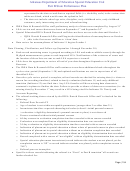 156
156  157
157 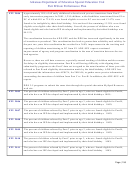 158
158  159
159  160
160  161
161  162
162  163
163 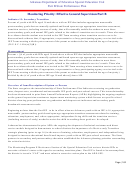 164
164  165
165  166
166  167
167  168
168 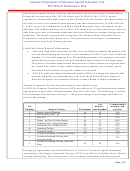 169
169  170
170  171
171  172
172  173
173  174
174 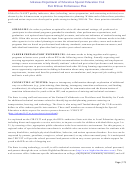 175
175  176
176 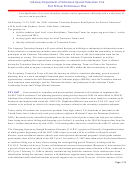 177
177  178
178 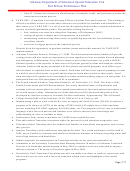 179
179  180
180  181
181  182
182  183
183  184
184 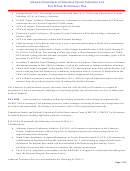 185
185  186
186  187
187  188
188  189
189  190
190  191
191  192
192 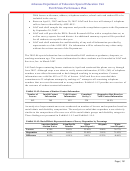 193
193  194
194  195
195 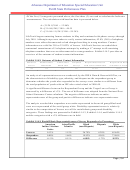 196
196  197
197 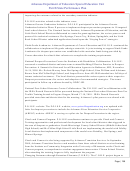 198
198  199
199  200
200  201
201  202
202  203
203  204
204 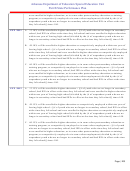 205
205  206
206  207
207  208
208 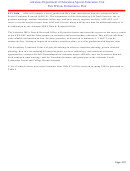 209
209  210
210  211
211 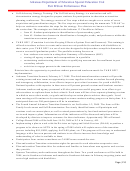 212
212  213
213  214
214  215
215 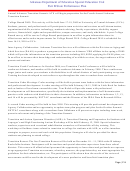 216
216  217
217  218
218  219
219 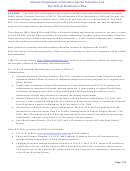 220
220  221
221  222
222  223
223  224
224  225
225 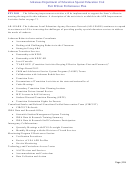 226
226  227
227  228
228 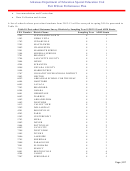 229
229  230
230  231
231  232
232  233
233  234
234  235
235  236
236  237
237  238
238  239
239 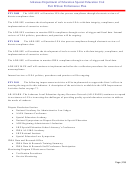 240
240 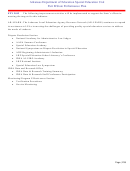 241
241 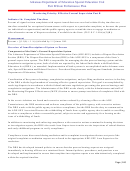 242
242  243
243  244
244  245
245  246
246  247
247  248
248 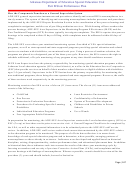 249
249  250
250  251
251  252
252  253
253  254
254  255
255 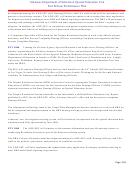 256
256  257
257  258
258  259
259  260
260  261
261 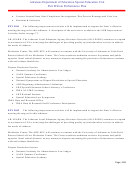 262
262  263
263  264
264 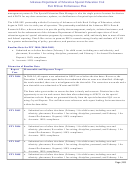 265
265  266
266  267
267  268
268  269
269  270
270  271
271  272
272 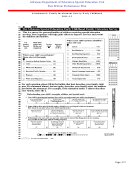 273
273  274
274 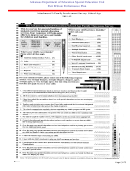 275
275  276
276 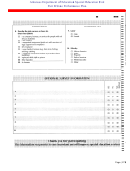 277
277 Arkansas Department of Education Special Education Unit
Part B State Performance Plan
Finally, as part of the study there was to be a staff training survey in Spring 2006. The survey
was not completed due to the ADE computer network restricting public access to the special
education website for more than 2 months. Instead the pilot site administrators reported on
challenges in training and implementing the data collection at the GSEG steering committee
meeting. The greatest challenge identified was shifting the teacher and service provider’s
frame of reference from the developmental domains areas to functional outcomes.
The data collection is based on a census of all children with IEPs who had both entry and exit
FFY 2006
COSF scores, left early childhood special education because they no longer required services
or were kindergarten eligible, and received at least six months of services. A total of 1,647
children met the criteria. The total “N” for each outcome area is slightly different due to
programs not submitting information on all outcomes for each child at exit. Data were
analyzed for inconsistencies and EC programs were contacted if questions arose or data
corrections needed to be addressed. In addition, M/PE Section has incorporated a review of
COSF protocols into the monitoring process to assist in the validation and reliability of data
across programs. Monitoring of EC programs in 2006-07 found that programs are embracing
the outcomes with many assessing them every year, not only at entry and exit, to assist in
developing the IEP for the next year.
Analyses of the initial progress data collected during the 2006-07 school year revealed that
the majority of children with IEPs are functioning at a level nearer, reaching, or maintaining
to those of same-age peers across all outcome areas. The greatest amount of improvement
was seen in “Acquisition and Use of Knowledge and Skills” with almost 36% of children
with IEPs reaching functional levels comparable to same age peers and an additional 32.5%
of children with IEPs moving to a level nearer to same age peers. This is an important gain,
for this particular outcome had the least number of children with IEPs already functioning at a
level comparable to same age peers.
In 2006-07, the data collection was added to the APSCN Special Education Module as part of
the Early Childhood sub-Module for education co-ops and districts. A new web-based
application was created for the 3-5 program operated under an interagency agreement with
the Department of Human Services Division of Developmental Disabilities Services (DDS).
The DDS application is part of MySped Resource, a secure data collection and review tool on
the special education website. The DDS application allows the 3-5 programs to enter data
directly to ADE-SEU and track children with IEPs (enrollment/child count information, EC
outcomes, and EC exits) as well as referrals which include Part C to B transition.
Mandatory training was held for co-ops and districts submitting COSF data through APSCN
as well as for DDS 3-5 programs that are required to submit their data in the DDS application
through MySped Resource.
It is anticipated that the number of children with IEPs with both entry and exit COSF scores
will increase in 2007-08. This will be the second full year of determining COSF scores at
entry and exit, thus increasing the pool of children with more than six-months of services.
Many of these children would have received 2 years of services by the end of the 2007-08
school year.
Page | 106
ADVERTISEMENT
0 votes
Related Articles
Related forms
Related Categories
Parent category: Legal









